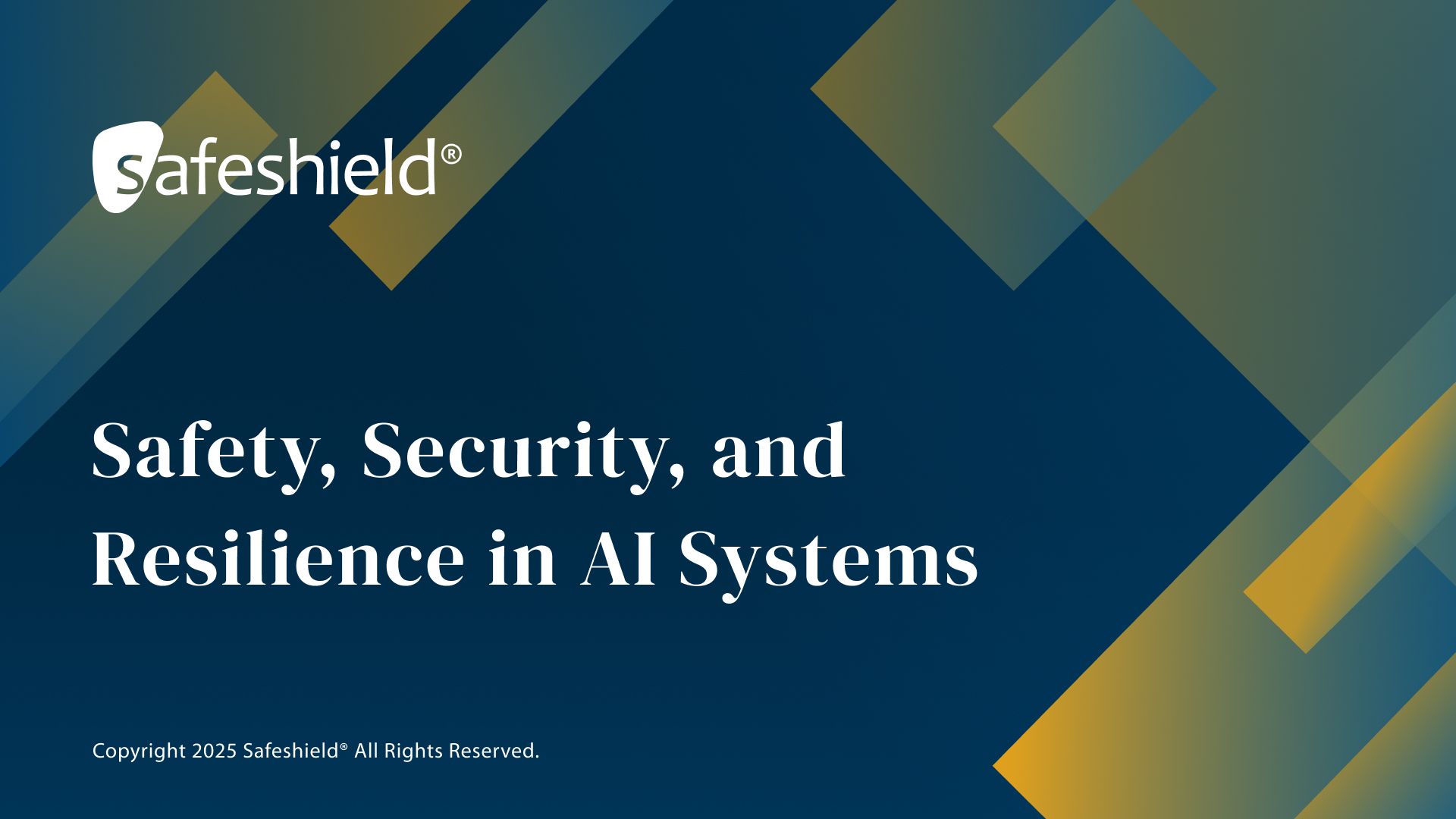Setting the Standard: How North American Businesses Can Lead in Global AI Governance
May 1, 2025
With as many as 77% of businesses using or exploring AI as of 2024, what was once a business advantage is now a baseline expectation. But as with any new technology, the exciting new heights AI has enabled businesses of all sizes to reach have also brought along a myriad of new risks and challenges to be aware of. This mass adoption of new AI technology has brought about the urgent need for new forms of governance and security.
AI Governance
When we refer to AI governance we’re talking about the frameworks, policies, and practices that guide the development and deployment of AI systems. AI governance makes sure AI technologies align with a business's ethical values and the wider regulatory requirements enforced in their region. It encompasses everything from data integrity to impact assessment and human oversight. As AI systems become more independent and impactful, businesses need adaptable models of governance that proactively identify issues and embed responsibility into every layer of AI strategy. Effective governance establishes clear guidelines and a shared understanding of what a "good AI" looks like.
North American organizations wanting to expand internationally will want to investigate changing the more reactive North American approach based on policy and move to a more proactive, framework-based approach. Correctly implemented AI governance prepares you for international regulations and lays a foundation of growth, ethics and responsibility that will help you move into a wider market. It will also future proof your AI technologies as their use and development gets more complex.
As AI technology evolves (and regulation alongside it) it's becoming increasingly clear that strong governance is a much more of a global concern than a regional one. The European Union has emerged as a front-runner with its binding AI Act, setting the bar for what effect AI oversight looks like. For many North American firms, however, governance in the context of AI has often been guided by voluntary frameworks and internal best practices.
One of the most popular and comprehensive frameworks is the U.S.-based NIST AI Risk Management Framework (AI RMF 1.0). While not legally enforceable, it has quickly become a reliable backbone for organizations aiming to build trustworthy and responsible AI systems.
NIST AI Risk Management Framework
The NIST AI RMF is structured around four functions—Map, Measure, Manage, and Govern. Each of these components provides practical guidance for how to identify risks within AI systems and mitigate these risks throughout their entire lifecycle.
Map
helps businesses understand and frame the context in which their AI system will operate, including identifying the intended purpose, its users, and the potential impacts of the system. This is especially important when AI applications are involved with sensitive areas like healthcare or finance.
Measure
focuses on evaluating risks based on defined criteria. This step emphasizes both qualitative and quantitative assessments, encouraging businesses to go deeper and consider metrics like fairness and data integrity.
Manage
then builds on this by translating these assessments into more practical, real-world actions. This includes applying risk controls, strategies for mitigation, and continuous monitoring. The aim is to make risk management as adaptive as possible.
Govern
addresses the broader structural and procedural elements. Ensuring that your AI risk management efforts are consistent and repeatable. This means creating a feedback loop between technical teams and leadership by assigning the appropriate roles and establishing accountability.
What sets the NIST AI RMF apart from other frameworks is its flexibility. It’s intentionally designed to be adopted by organizations of any size, in any sector, and at any stage of AI maturity. Whether you're building your first machine learning model or managing a portfolio of AI applications, the framework offers scalable guidance.
At Safeshield, we offer a Certified NIST AI RMF 1.0 Architect course designed to help professionals understand and apply the framework effectively in day-to-day operations. Check it out here.
EU AI Act
If we shift focus to the European Union, we’re looking at a fundamentally different regulatory philosophy. One that’s rooted in precaution, fundamental rights, and harmonized enforcement. The EU’s Artificial Intelligence Act (AI Act), adopted in 2024, is the world’s first comprehensive, binding legislation that targets AI technologies specifically. Its aim is to regulate AI and ensure that its deployment aligns with core European values like human dignity, privacy, non-discrimination, and transparency.
The AI Act introduces a risk-based classification system that breaks AI applications into four categories:
- Unacceptable risk
- High risk
- Limited risk
- Minimal risk
Each tier comes with its own distinct regulatory obligations, the strictest of which apply to high-risk systems.
Unacceptable-risk systems (those that pose a clear threat to fundamental rights) are outright banned. This includes AI used for manipulative behavior (like social scoring by governments) or real-time biometric surveillance in public spaces, except under very narrow and regulated exceptions.
High-risk systems are the most relevant category for NA companies expanding into the EU. These are systems used in sensitive domains such as education, employment, access to financial services, law enforcement, critical infrastructure, and healthcare. The requirements here are extensive and go well beyond one-time compliance checklists. Businesses should put a focus on implementing strict risk management systems, ensure data quality, document their processes, maintain logs, perform conformity assessments, and guarantee human oversight. Post-market monitoring is mandatory, meaning companies must continue evaluating the safety and performance of their AI systems after deployment.
Limited-risk AI systems like chatbots or recommendation engines are subject to transparency obligations. Users must be made aware that they are interacting with an AI system. While these requirements are lighter, they still signal a shift toward more active disclosure and informed user consent.
Finally, minimal-risk systems such as spam filters or AI in video games are largely exempt from specific obligations, though voluntary codes of conduct are encouraged.
What makes the AI Act especially significant for North American businesses is its extraterritorial reach. If your AI system is used by individuals or organizations within the EU, even if your company has no physical presence there, you’re still subject to the Act. This means that, for example, a startup in Toronto offering an AI-powered HR platform to a client in Germany must comply as though they were based in Berlin.
Understanding these requirements early and building compliance into your development and deployment pipelines can save time, resources, and reputational risk down the line. Unlike in North America, where much of AI regulation remains voluntary or sector-specific, the EU AI Act is enforceable, auditable, and quickly becoming the global benchmark for AI governance.
This Act can be turned into a competitive advantage for North American companies looking to expand into Europe. It signals to clients and regulators that your AI is safe, accountable, and ready for the European market.
To help organizations prepare, we’ve linked this article with targeted training programs designed to guide your team through both compliance and implementation. Our ISO/IEC 42001 Lead Implementer
and Lead Auditor
certifications give professionals the tools to embed trustworthy AI practices within their operations. For those leaning into risk-based approaches, our Certified NIST AI RMF 1.0 Architect
course offers a practical framework to operationalize AI risk management.
ISO/IEC 42001
This is where standards like ISO/IEC 42001 become especially valuable. ISO/IEC 42001 is the first internationally recognized standard specifically designed for artificial intelligence management systems (AIMS). Unlike impromptu internal reviews or one-time compliance checks, this standard creates an adaptive, continuous governance system. It helps organizations define how AI should be built and deployed and how it should be monitored, improved, and retired over time.
ISO/IEC 42001 provides a complete governance framework that integrates AI management into your existing business processes and ensures that AI technologies aren’t isolated from the rest of your business and, instead, are fully in line with your values and regulatory obligations.
The standard is structured around several key principles: transparency, accountability, human oversight, data governance, and continual improvement, each of which plays an important role in the development of a mature and reliable AI governance system.
Transparency: Businesses must be able to explain how their AI systems work, what data they rely on, and why certain decisions are made. The focus here is on being able to clearly communicate to both internal and external stakeholders, like users, auditors, and regulators.
Accountability: This requires that clear lines of responsibility are established. This means defining who is responsible for AI outcomes within the business and how decision-making authority is structured and reviewed. Accountability tools like internal audits and external reviews are invaluable for following up on this.
Human oversight: The principle that AI systems should augment human judgment, rather than replace it. ISO/IEC 42001 puts importance on ensuring people remain a large part of the process, particularly in areas of importance. This includes setting thresholds for intervention, defining when human review is necessary, and providing training to the staff responsible for overseeing AI systems within the business.
Data governance: Refers to the accuracy, relevance, and integrity of data used to train AI systems. Businesses are expected to enforce strict controls around data collection, access, storage, and quality. Bias detection and mitigation processes must also be embedded throughout the data lifecycle to minimize the risk of discriminatory outcomes.
Continual improvement: This reflects the understanding that AI systems are dynamic tools that continuously evolve. Governance must continue beyond just the initial deployment of AI and must be regularly revisited. Businesses must perform regular evaluations, keep up to date incident logs and update documentation and controls as systems learn.
Together, these principles establish ISO/IEC 42001 as a dynamic and integrated system for managing AI responsibly. Rather than looking at governance in isolation, the standard weaves it into the everyday operations of a business, linking technical development with ethical responsibilities and operational security. This enables AI technology to more closely align with the long-term goals and values of the business.
ISO/IEC 42001 puts importance on structured risk management. Businesses must be aware of how their AI works and why it behaves the way it does. There must also be plans in place to address when things go wrong. This is particularly relevant in the context of high-risk AI applications as defined under the EU AI Act. The standard walks you through the implementation of safeguards, the creation of incident response protocols, and the development of audit trails.
For North American companies entering the EU market, ISO/IEC 42001 functions as both a compliance accelerator and a signal of trust. It demonstrates that your organization is committed to the highest level of operational security. And in an environment where your European counterparts are already familiar with ISO-based standards, that can open new doors to potential partnerships, markets and regulatory approval.
Another key advantage of the ISO/IEC 42001 is its alignment with other regulatory and ethical frameworks. It is designed to harmonize well with existing standards, such as ISO/IEC 27001 for information security and ISO/IEC 9001 for quality management. This means that if your organization is already certified in these areas, you can build on existing systems and processes rather than starting from scratch.
And while ISO/IEC 42001 helps you build a compliant and resilient AI governance structure, certification also serves as a powerful external signal. In Europe, where consumers and regulators expect increasingly more transparency and accountability, being able to demonstrate adherence to a recognized international standard can make all the difference.
Training and internal expertise are essential to making this work in practice. Governance frameworks are only as effective as the people implementing them. That’s why Safeshield has developed certification programs tailored to professionals tasked with leading these efforts. Our ISO/IEC 42001 Lead Implementer
and Lead Auditor
courses are designed to help individuals understand, design, and maintain AI governance systems in line with the standard.
These courses are built to equip your team with real-world tools and knowledge. Whether you’re looking to proactively prepare for EU regulations or just want to bring more attention to detail to your internal processes, the right training will ensure your team is up to the task.
Final Thoughts
As AI becomes more ingrained into the everyday workings of business the need for more heavily regulated governance is clear. In order to futureproof the adoption of AI technology and ensure a bright future, businesses are going to need to change the way they think about governance. The frameworks and regulations we've explored in this article all point to a shared global direction: one where trust and transparency go hand in hand with accountability.
North American companies have an opportunity to get ahead of their competition and begin leading the way alongside their EU counterparts. North American companies could become global front runners in the adoption of new AI technology. Strong governance is set to become the backbone of what a business is capable of so getting ahead of the game while it’s still in its infancy is crucial. The more we lean on AI, the more we need strong governance to keep it in check.
As new technology drives innovation at an ever-faster pace, the expectations of regulators and consumers are increasing with it. Now is the time to lean on strong frameworks and standards to ensure a bright and successful future for your business.
If you're ready to take the step into Europe, explore our certification programs. We can equip your team with the right tools and knowledge to lead your business forward.
Share this article





